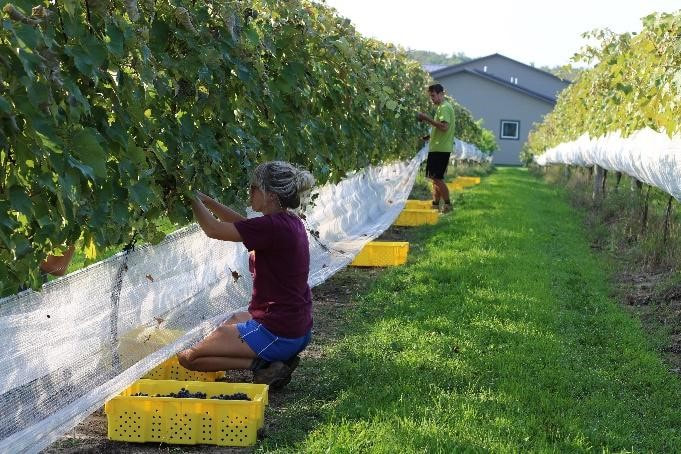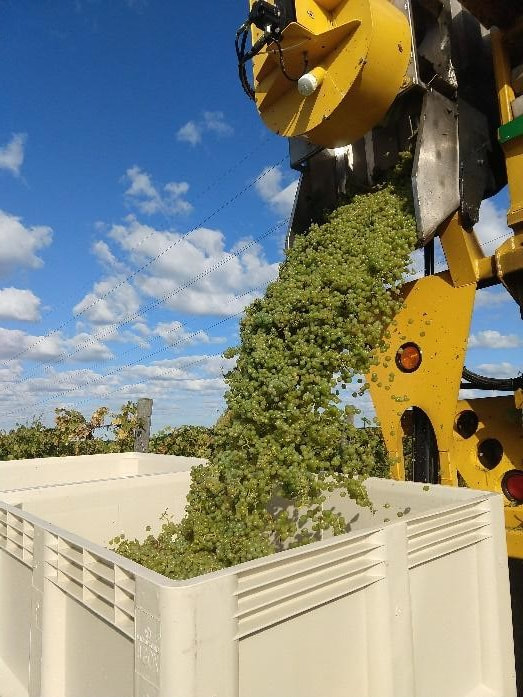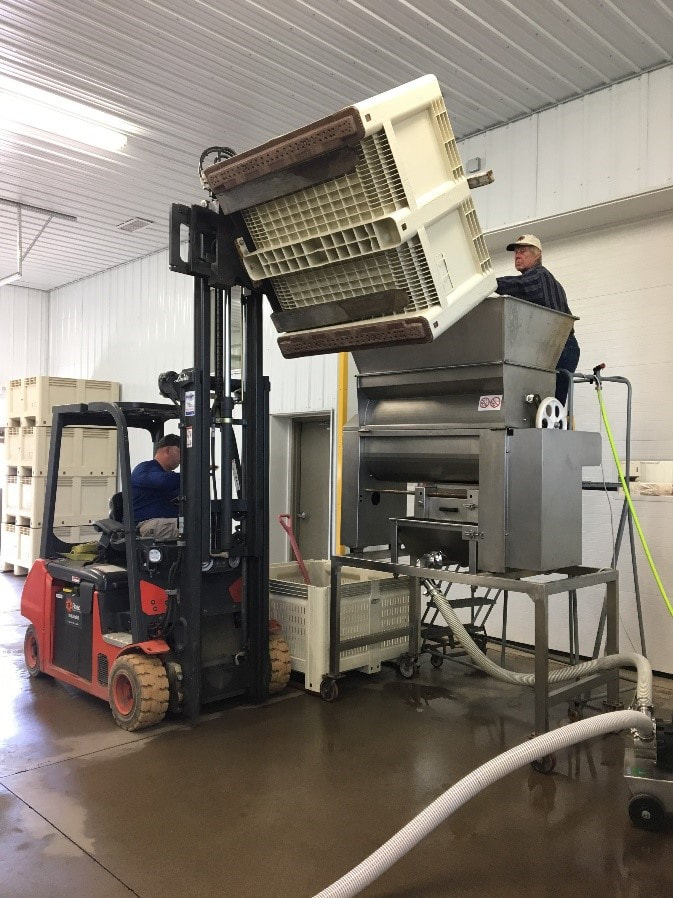| Once the grapes have gone through veraison, the vineyard and production team begin checking for desired ripeness by monitoring sweetness, acid, and pH levels. At this time, they also begin to schedule the new year’s harvest, as different varietals ripen at different rates. This will determine where the harvest will begin in the fields. At DDW we harvest both by hand, and by using high tech harvesting equipment. When choosing which grapes are to be hand harvested, some rows are set aside exclusively for a group of our Inner Circle Wine Club members. In addition, some of the grapes need to be hand harvested so the team can look at every cluster, to select the best grapes for certain wines. Hand harvesting in the winter months allows the team to be selective about the fruit used in the making of our popular Ice Wine. Our team used to harvest all the grapes by hand. But, as the acreage continued to grow, we needed to advance to something bigger. In 2017 we upgraded to an OXBO harvester from Clear Lake, WI. It has a leveling system to raise and lower the machine above the vines, always maintaining the proper clearance to not damage the trellising system. Long bows on the inside of the harvester gently shake and move past one another to knock the ripened grapes off the vine. This also de-stems the grapes, which helps with processing them later in production. The grapes travel along a conveyor belt in small bins on either side of the harvester, to the hoppers on top where they are stored until they can be transferred into macro bins. Each macro bin can hold approximately a half-ton of grapes. After coming off from the field, the macro bins are weighed and recorded to get an accurate total yield for the season. Using the forklift, the macro bins are brought from the scale to the crush line. The first step is for the grapes to be sorted. The mechanical harvester has already removed most of the stems, but we still use a de-stemmer to help remove any remaining MOG (material other than grapes), such as sticks and leaves. The grapes are then crushed between two rollers and pumped into the press. The press contains a membrane which inflates and squeezes the grapes, releasing the juices that are then caught below the press in a drip pan and pumped into a tank to be fermented. At DDW, we celebrate harvest and crush with our Grape Stomp Festival each year, where we allow our guests a chance to experience a traditional stomp. With modern technology, the crush process has become more mechanical, requiring less physical labor. The next series of steps to be highlighted in an upcoming post, featuring the art and science of fermentation, stabilizing, aging, and blending the base wines that will become finished wine. |
|
4 Comments
12/21/2023 10:37:52 pm
I particularly enjoyed learning about the careful timing of the harvest to ensure optimal grape ripeness and flavor. It's incredible how much precision is required to capture the essence of the vineyard in each bottle. The mention of different grape varieties and their unique characteristics added an extra layer of complexity to the narrative, making it even more engaging.
Reply
5/31/2024 01:06:34 am
This is helpful and interesting, thanks for sharing! Learning about the OXBO harvester's advanced features and the careful handling of grapes during the harvest process highlights the balance between technology and tradition at DDW.
Reply
6/23/2024 11:49:40 pm
Great information, appreciate it! It's intriguing to learn about the combination of hand harvesting for select grapes and the use of advanced technology like the OXBO harvester to manage larger harvests efficiently.
Reply
Leave a Reply. |
AuthorsA collection of DDW employees and wine enthusiasts. Archives
November 2023
Categories |




 RSS Feed
RSS Feed
